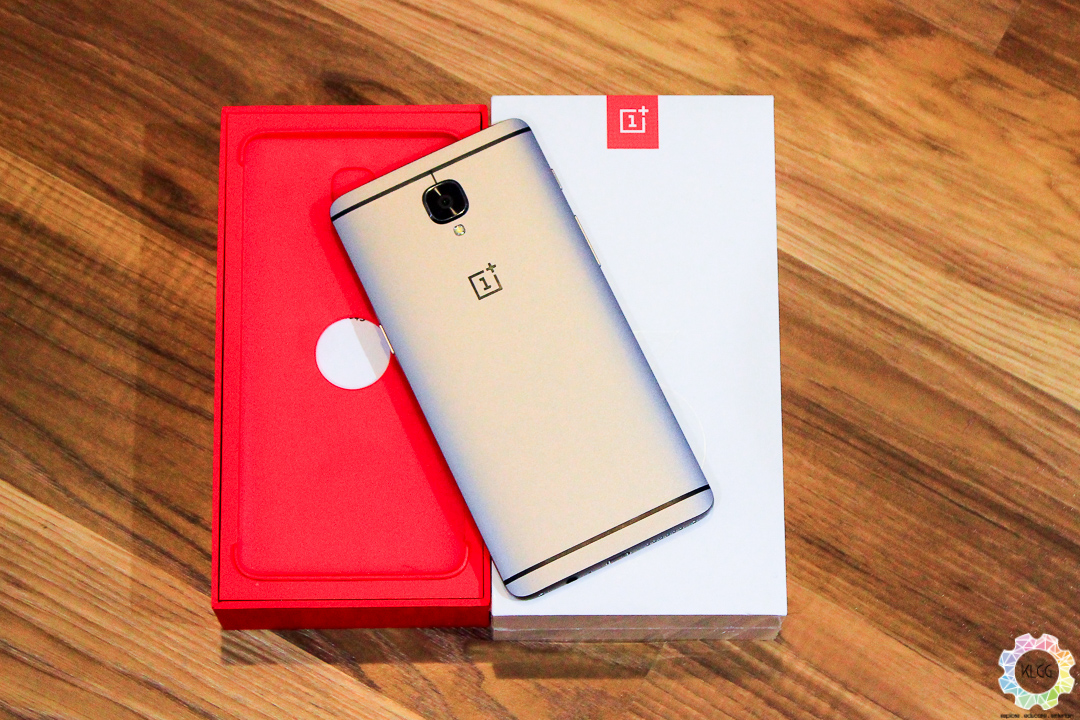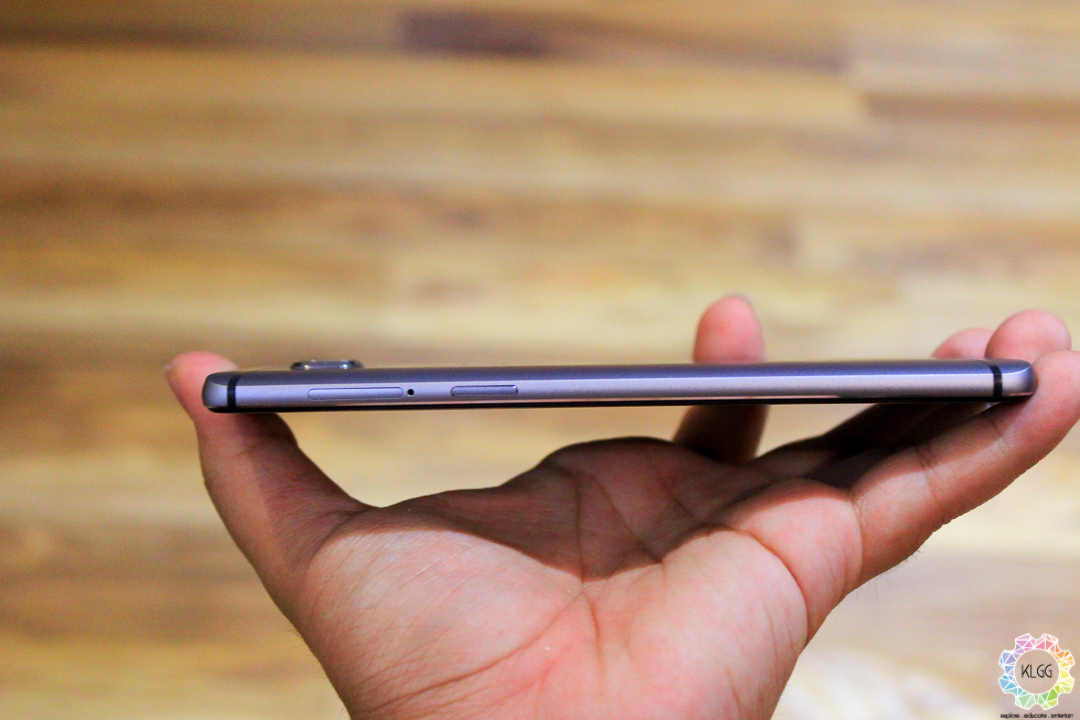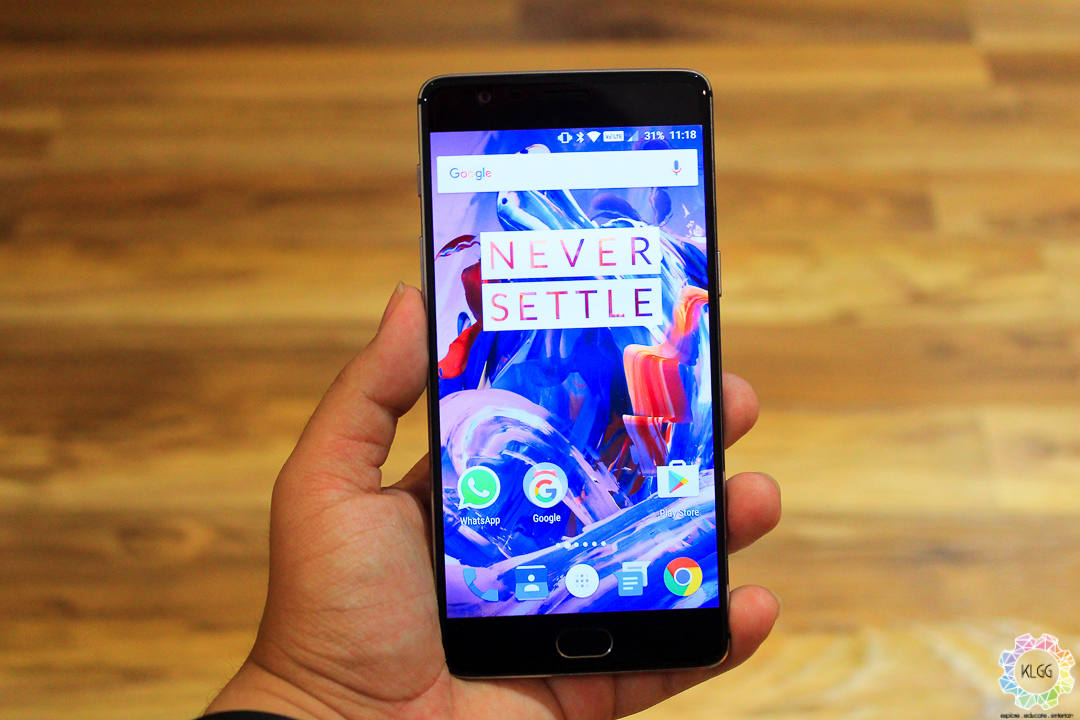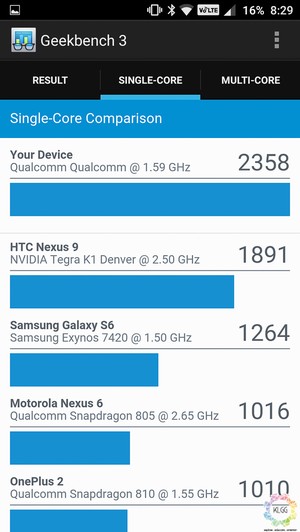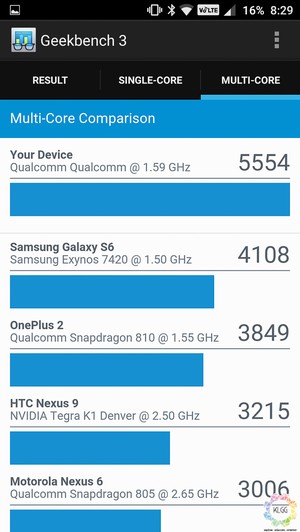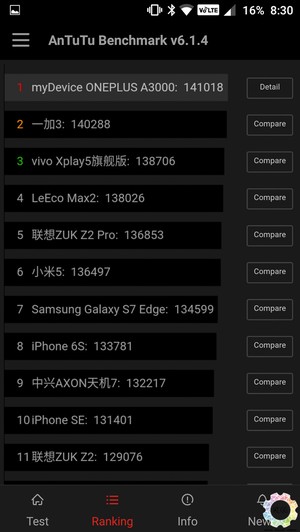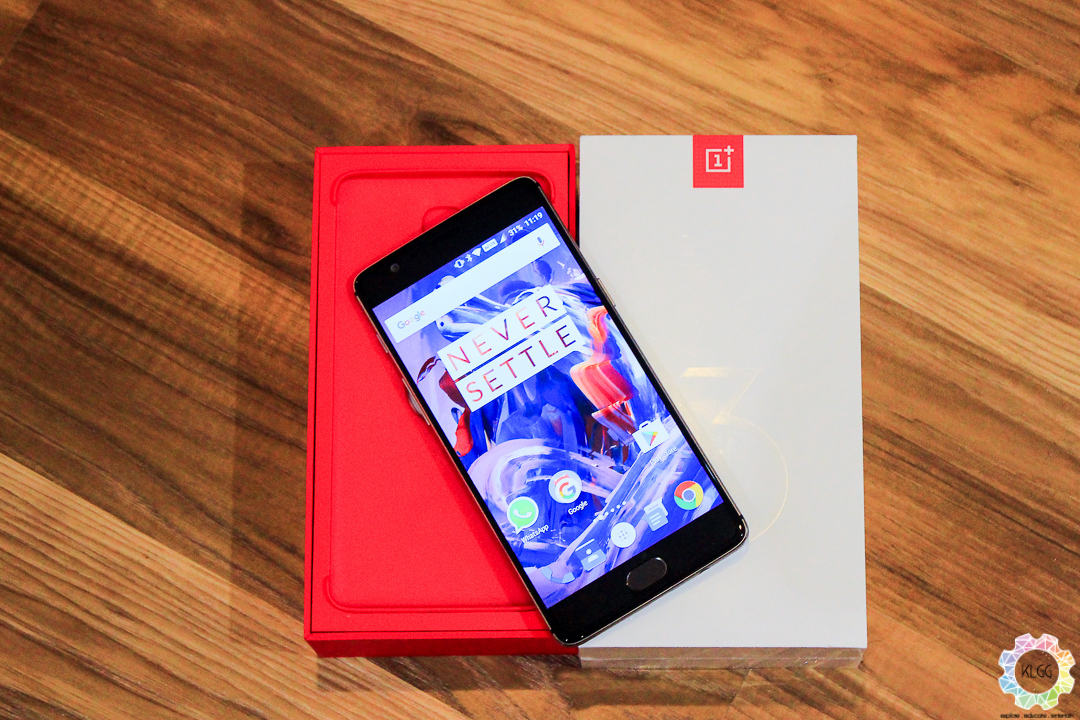428
Two years ago, I hopped onto the OnePlus bandwagon and purchased the first ever “Flagship Killer” smartphone, the OnePlus One, then succeeded by the OnePlus 2 last year, which proved to be underwhelming after all the hype it created, since it seemed to have more compromises than its predecessor. Just last month, the Chinese startup launched its third flagship – the OnePlus 3, finally ditching the “Flagship Killer” title. But has OnePlus shown any signs of maturity with this new budget flagship? Or will we be looking at corners being cut again? The OnePlus 3 is slated to arrive to Malaysian shores real soon so there’s definitely no harm in reading on.
Design and Hardware
At first glance, the OnePlus 3 has strayed far from previous OnePlus smartphones in terms of build material, which isn’t a bad thing at all. The OnePlus 3 boasts a sand-blasted aluminium body this time, sporting a more refined and sleek look compared to previous generations of OnePlus handsets which had Sandstone bodies. Of course, OnePlus has a Sandstone casing available, alongside other materials as well for the OnePlus 3, if you ever so intend to retain that legacy OnePlus phone texture. On the other hand, the premium looking OnePlus 3 does remind me of HTC’s design elements, with a tinge of iPhone references as well, based on its rear panel with antenna bands, coupled with the placement of ports and speakers at the bottom of the device. The handset also comes in a significantly slimmer form factor at a thickness 7.35mm, which happens to be 25% slimmer than the OnePlus 2. A slight drawback from this however, is its camera bump, which can be a deal breaker to some. Buttons feel solid and seem to have the right amount of “clicky-ness”, with the power button sitting on the right and the volume rocker on the left, plus the textured alert slider which was retained from the OnePlus 2. Overall, a not-so-special design anymore, but definitely an attractive one considering the trend among smartphones this day and age.
Display
Although the OnePlus 3 is made and meant to compete with 2016’s big players such as the Samsung Galaxy S7, LG G5 and HTC 10, the company has still decided to remain with a 1080p display instead of a more favorable QHD resolution, in order to keep costs low and for better battery life. The screen size also stays at 5.5-inches but we’re looking at an AMOLED panel this time, a switch from LCD panels from its predecessors. OnePlus calls it Optic AMOLED, which definitely features more saturated colors, deeper blacks and brighter whites. OnePlus opted with a PenTile display, which is known to have reduced effective resolution, and has brought in mixed reviews and some criticisms across the web. But unless you’re holding the OnePlus 3 right against your face, or using it in a VR headset, the PenTile display will barely be noticeable, if not at all. Below the screen is a super snappy fingerprint scanner, which is probably the fastest among Android smartphones, unlocking in a mere 0.2 seconds, flanked by two capacitive buttons, with an option to switch to on screen buttons instead.
Internal specs, Performance & Benchmarks
Moving on to the OnePlus 3’s internals, they’re mostly unsurprisingly of flagship standard, since that’s what the company is striving for. Being powered by a quad-core Snapdragon 820 clocked at 2.2GHz with an Adreno 530 GPU brings it up to par with flagship competitors. Not only that, the handset happens to be one of the few smartphones out there with a whopping 6GB of RAM, which gives it the edge on paper. However, the OnePlus 3 has been plagued with RAM management issues since its launch, in which the phone does not fully utilise the 6GB of RAM available when it comes to running apps, for the sake of better battery life. The company, known for its delayed software update rollout was quick to address this bugging issue, rolling out software updates which brought fixes to RAM management, alongside some other bug fixes as well. OnePlus retained the same non-expandable 64GB storage in the OnePlus 3, which is a slight letdown to some. On another note, it features UFS 2.0 technology, which promises faster data transfers than the usual eMMC 5.1 and 5.0 flash memories.
Bouncing back from a slightly underclocked Snapdragon 810 last year with the OnePlus 2, which had overheating issues, the Snapdragon 820 powered OnePlus 3, with the help of its 6GB of RAM, breezed through benchmark tests with flying colors. As seen from the screenshots, the device managed to score a chart topping 141018 on Antutu, which appears to be edging the rest of the competition, including the Galaxy S7 Edge, Xiaomi Mi 5 and the Vivo Xplay5, a fellow Chinese handset with the same SD820 chip and 6GB of RAM. On Geekbench, the OnePlus 3 managed a single-core score of 2358, which is more than double the score of its predecessor and a multi-core score of 5554, 30% higher than the SD810 OnePlus 2.
Audio
For audio performance, the OnePlus 3 seems impressive without having to tweak audio via an equalizer or an app of that sort. Typically, listening to music through the 3.5mm headphone jack requires some form of tweaking in order to obtain that sweet sounding spot, and this applies to most flagships as well, with the exception of the audio-centric HTC handsets. But the OnePlus 3 seems to have a balanced overall audio that eases on the trebles, which can be ear-piercing from other devices, so kudos to OnePlus on that.
Software
If you’re new to OnePlus, you ought to know that its software is pretty much stock Android, with a couple of customizations and optional features. If you happen to be a diehard vanilla Android or a Nexus fan, the OnePlus 3 that runs OxygenOS, could just be the phone for you to step out of your comfort zone. It comes with features such as Shelf which displays your frequently used apps, contacts and widgets; Dark Mode for a dark themed UI; Night Mode for easier viewing in the dark; alongside gestures which existed since the OnePlus One, to name a few. OxygenOS has certainly matured since OnePlus parted ways with Cyanogen, though software updates might still arrive later than promised. Don’t worry, OxygenOS is running Android 6.0.1 Marshmallow, and since it isn’t a heavily skinned UI, operation is buttery smooth at all times without any stutters or lags so far after two weeks of use.
Battery
The OnePlus 3 sees a drop in battery capacity to 3,000mAh battery from last year’s 3,300mAh battery in the OnePlus 2. But the company got that covered this time with the newly introduced Dash Charge technology. Dash Charge, which is said to be using OPPO’s Super VOOC fast charging tech managed to re-juice the OnePlus 3 by 49% in half an hour, which is pretty impressive, and also a huge improvement from the OnePlus 2’s lack of quick charging capabilities. Do bear in mind that Dash Charge can only function with both the OnePlus 3’s USB-C charging cable and the Dash Charge adapter. With that being said, the battery life of the OnePlus 3 isn’t that great, giving me nearly 4 hours of screen-on-time after nearly a day’s worth of heavy use – including browsing through social apps via data, gaming and navigation. With the introduction of Dash Charge, battery life isn’t that big of an issue anymore.
Camera
Cameras are one of the major deciding factors when it comes to purchasing a phone. OnePlus seemed to have compromised in this department with the OnePlus One and OnePlus 2. The OnePlus 3 appears to have its camera game stepped up, with a 16MP Sony IMX298 sensor for its rear camera, equipped with OIS and EIS, featuring a 1.12µm pixel size. OnePlus seems to have made up some ground when compared to this year’s flagships, considering the fact that its predecessor didn’t quite make the cut last year. With that said though, it still won’t be able to best the likes of the elite Galaxy S7, but it fares pretty close up there in the high-end spectrum. You should be able to get impressive shots with good dynamic range and balanced exposure 90% of the time, and like the S7, photos do tend to be on the saturated side, which isn’t entirely a bad thing at all. The camera app interface looks pretty clean as well, with auto-HDR enabled by default, which can be turned, plus a manual mode available for extra tweaking as well.
When it comes to night scenes and low light shots, the OnePlus 3 falls victim to the usual problems most smartphone cameras face such as graininess and loss in detail, possibly due to its slightly smaller pixel size. The camera app tends to boost up ISO for low light shots, hence the grainy images. OnePlus has introduced a Dynamic De-Noise feature that softens up images, making them less noisy as a result. In this case, manual mode does come in handy but a tripod is probably needed if you intend to capture images with slower shutter speeds. The camera flash does not help as much as I thought it would, but it does make colors look slightly more natural. As for the OnePlus 3’s selfie shooter, which is of 8MP and f/2.0 aperture, fared just as well as other smartphones of 2016, capturing a good amount of light for good photos.
The huge disappointment shows when recording video, where the OnePlus 3 performs like an OIS-lacking smartphone. Video clips appear to be shaky most of the time, more apparent when capturing footage while walking or moving about. Stationary videos seem to perform fairly decent but the OnePlus 3 could still do better in this department since it has OIS and EIS. On a lighter note, the slow-mo feature turned out to be pretty impressive, not to mention fun to mess around with.
Extra bits and points
A couple of points worth mentioning include the return of NFC, which caused some hoo-ha after it was omitted from the OnePlus 2 last year. Android Pay, which uses NFC has become increasingly common here in the States. Although Android Pay hasn’t been implemented in Malaysia, it’s good to have NFC equipped smartphones for future-proofing purposes. Plus, NFC supported devices are currently on the rise, hence NFC technology will be used more frequently before you know it. Apart from that, the OnePlus 3 has a dual-SIM slot, which unfortunately isn’t a hybrid slot for micro SD cards, but still essential for those who are constantly travelling. Having said that, the OnePlus 3’s network performance is excellent without issues over WiFi and data, and call quality has been top notch so far, given the fact that the handset supports T-Mobile’s voice-over LTE (VoLTE) calls, providing HD voice quality over phone calls.

